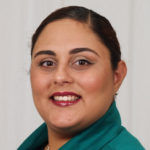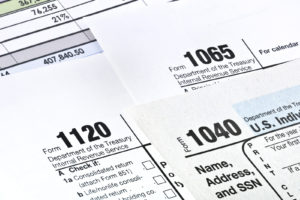22 Jan Sole Proprietorships: Getting Ready for Tax Season

By Arianna M. Aguilar
Tax season is quickly approaching, and as small business owners, it’s time to get everything in order.
Depending on your business structure, there are forms that need to be filled out and records to be kept and produced. This article will cover taxes for sole proprietorships.
The following are some tips for getting everything ready for this year’s tax returns.
If you are a sole proprietorship, you need to make sure you have all of your accounting up-to-date, including all of your expenses and income.

For tax purposes, the IRS makes no legal distinction between sole proprietors and owners and has placed them in the same category. Though being a sole proprietor has some benefits, it does require careful accounting. As a sole proprietor, you must separate business expenses and income from personal expenses and income. Therefore, maintaining separate bank accounts for each is recommended. You may also choose to have a Doing Business As (DBA) name and bank account to facilitate the separation of personal and business income and expenses.
Sole proprietorships can deduct the following expenses: home office deductions, business expenses (as long as they are ordinary and necessary), health insurance, travel, and half of the Self Employment Tax.
Home Office Deduction
With regard to home office deductions, a portion of the space in your home can be deducted as an office space. To qualify, it must be specifically dedicated to the conduct of business and a place to meet with clients or customers. It must be for business use only. Therefore, if you work at your dining room table, you may not deduct the expenses associated with that space. To properly calculate office space deductions, you must calculate the percentage of the square footage of the home that is used as an office space. will determine the portion of your rent, mortgage payments, utilities, and other expenses that is deductible.
Some business owners are afraid to take the home office deduction for fear of being audited. However, if you qualify for that deduction, don’t be afraid to take it, as long as the space is dedicated to business use only.
Business Expenses
IRS Form Schedule C (which will be submitted to the IRS by the sole proprietor) lists the categories of business expenses. They include advertising, car and truck expenses, commissions and fees, contract labor, depletion, depreciation and section 179 deduction, employee benefit programs, insurance (other than health), interest, legal and professional services, office expense, pension and profit-sharing plans, rent or lease, repairs and maintenance, supplies, taxes and licenses, travel, meals and entertainment, utilities, wages (less employment credits).
Health Insurance Deduction
According to Turbotax, “If you are self-employed, you may be eligible to deduct premiums that you pay for medical, dental and qualifying long-term insurance coverage for yourself, your spouse, and your dependents. This health insurance write off is entered on page 1 of Form 1040, which means you benefit whether or not you itemize your deductions.”
If you are a sole proprietorship and you pay to provide health coverage for your employees, you can deduct those premiums on line 14 of Schedule C (Profit or Loss from Business).
Travel
As a sole proprietorship, you can deduct automobile expenses related to business travel. However, if you rent an office and must drive there every day when you need to work, you can’t deduct that travel because it is considered to be “commuting.” You can deduct your travel expenses if you are meeting with a client, going to the post office or the bank, or attending an industry event, among other things.
There are two ways to deduct automobile expenses. You may take a standard mileage deduction (.535 cents per mile for 2017). This covers all the general operating expenses such as gas, oil changes, repairs, maintenance, insurance, and original cost of vehicle.
The other way to deduct automobile expenses is to deduct the percentage of the maintenance, gas and insurance that is related to business use.
Now, if you have to travel overnight, you can deduct the cost of transportation (including plane or train ticket, ground transportation to the airport or train station, airport parking). You can also deduct the cost of lodging and meals.
Or, according to the IRS, “instead of keeping records of your meal expenses and deducting the actual cost, you can generally use a standard meal allowance, which varies depending on where you travel. The deduction for business meals is generally limited to 50% of the unreimbursed cost.”
Remember to keep meticulous records for mileage and travel.
Self-employment Tax
As a sole proprietorship, you have to pay self-employment tax, in addition to regular income tax. When you are employed by a company, the employer pays half of the Social Security and Medicare taxes, and you pay the other half. Therefore, that means that a sole proprietor has to pay both the employer and employee taxes. However, the sole proprietor can take a deduction for half of the self-employment taxes.
Income
Keep records of all income you receive, whether it is paid to you in cash, or by check or credit card. Even if you do not receive a 1099, you must report the income received. If you do receive a 1099, you should attach it to your return.
Preparation of Tax Returns
As a sole proprietor, you may find that you can file your own tax returns without an accountant’s help. The form that will be filled out is Schedule C and Form 1040.
Keep records of all income you receive, whether it is paid to you in cash, or by check or credit card.
However, many sole proprietors decide to use an accountant to prepare their returns accurately.
You can help out your accountant by keeping good records. Some keep receipts of expenses in an envelope and simply hand it over to the accountant at the end of the year. However, paying an accountant to reconstruct your records can be painstaking and expensive.
If you keep up with the recordkeeping on a routine basis, it will make your life easier at the end of the year. Many also find it useful to use an accounting software such as Quickbooks, and find it easiest to enter income and expenses on a daily, weekly or monthly basis.
If you use accounting software, make sure you reconcile all of your bank accounts. Check your ledger at the end of the year for accuracy in the profit and loss statement that the accounting software will produce.
Taxes do not have to be daunting for sole proprietorships. If sole proprietors keep good records on expenses and income, tax preparation will be easier in the weeks and months before April 15th.
[Arianna M. Aguilar has been interpreting and translating since 1999. She is a North Carolina master certified Spanish court interpreter and a Certified Medical-Spanish interpreter.]
The views and opinions expressed are those of the author and do not necessarily reflect the official position of NAJIT.
